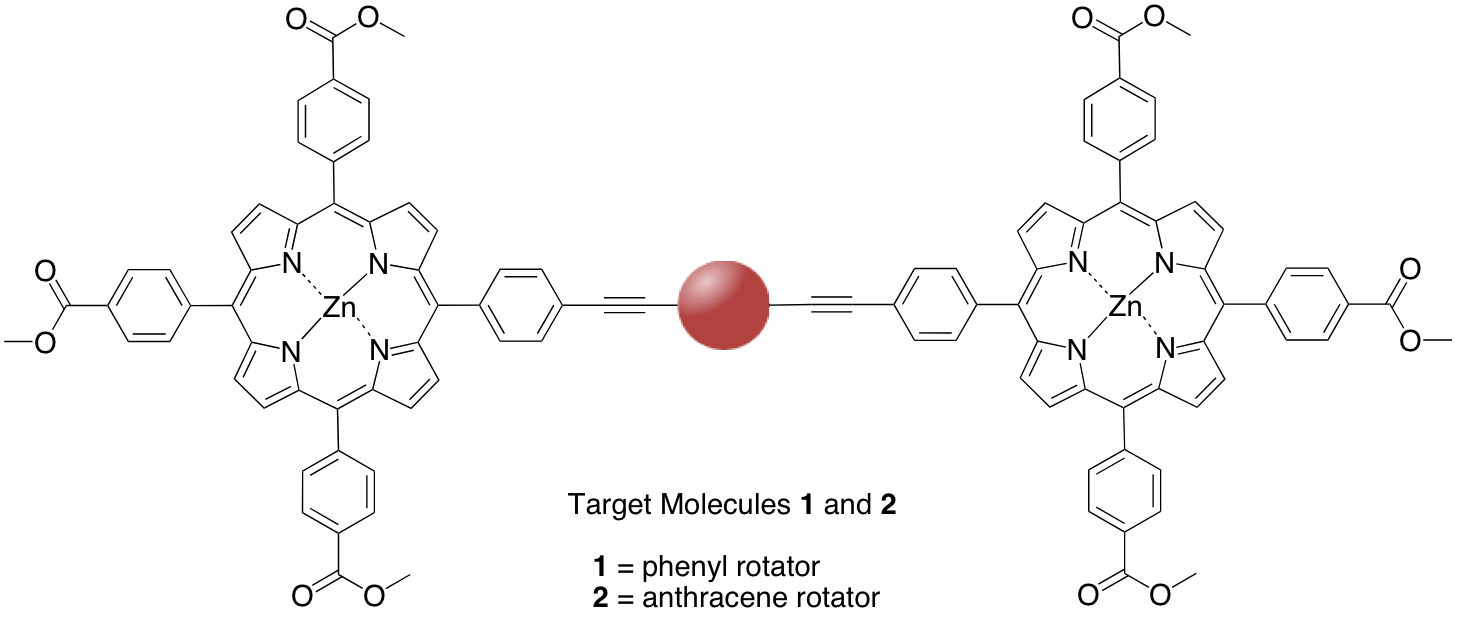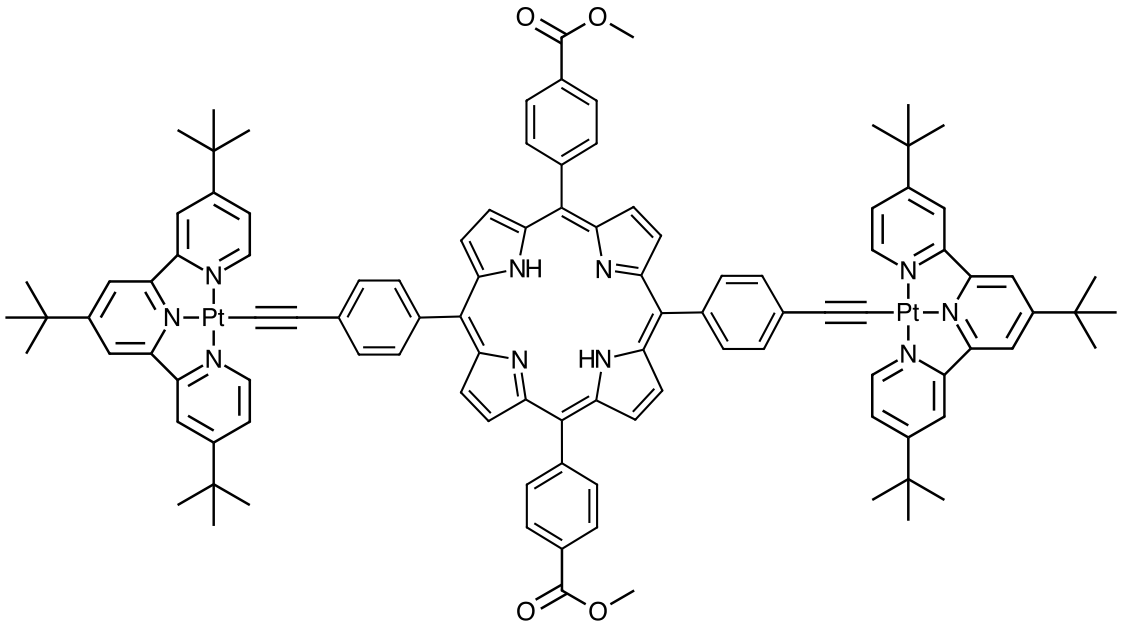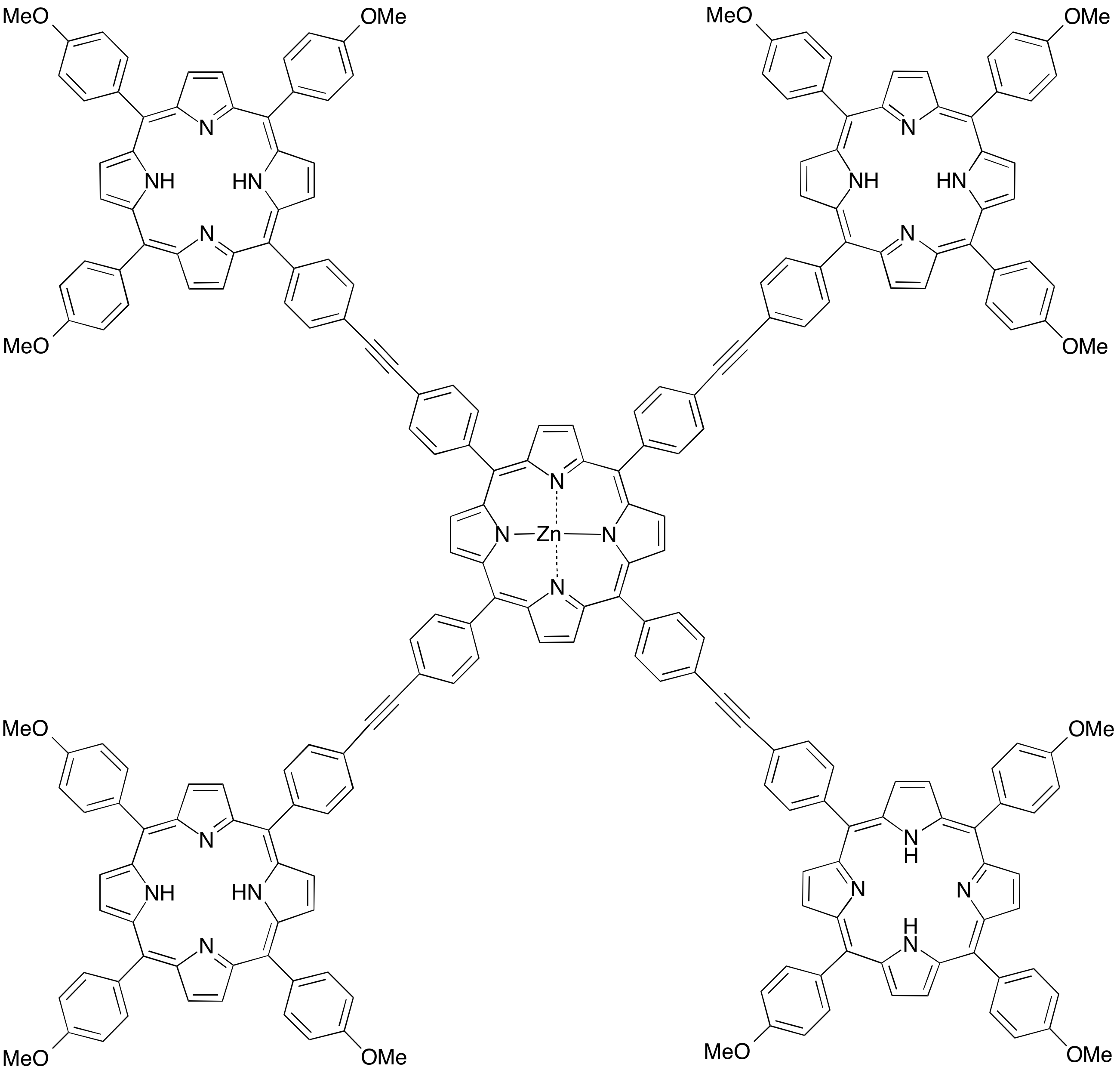Reports: UNI1051012-UNI10: Synthesis of New Tunable Porous Coordination Materials to Demonstrate Geared Motion in Solid-State Materials
Stephanie L. Gould, PhD, Austin College

Figure 1. Proposed Stacked Rotor, Porphyrins (purple diamonds) are covalently bonded to rotator components (red circles pillared by bidentate ligands (orange ovals).
During the third and final year of funding from the ACS PRF, two monomers, 1 and Figure 2. Target Molecules 1 and 2 The 2013/2014 extension of this grant afforded the PI and her team an opportunity to engage with this project in the newly build IDEA Center at Austin College. Moving into the the new lab during the summer 2013 was successful; unfortunately, a small fire in the synthesis research space (shared by three PIs) resulted in the lab being shut down from November 2013 to April 2014. Development of new Dyes for use in Dye-Sensitized Solar Cells In collaboration with the Dr. Bradley Smucker at Austin College, the PI has been able to utilize the excellent photochromic properties of porphyrins with the luminescent properties of terpyridinyl platinum complexes to form a broad-spectrum dye for use in a dye-sensitized solar cell. Figure 3. Chemical Structure of Terpyridine Platinium capped Porphyrin Dye
Dr. Smucker and the PI, Dr. Gould, co-advised a summer undergraduate research student, Yamna Zaman, working on this project. Funding for Ms. Zaman's stipend and supplies were paid by this PRF grant. Significant progress was made during the summer, both a model capped 1,4-diethynylbenzene complex and the desired platinum capped porphyrin were synthesized. Luminescent properties of the compounds are underway. The second type of dye started during year two of this grant is a five-porphyrin molecule shown in Figure 4.
Figure 4. Chemical Structure of Porphyrin Pentad
Gregory Payne worked on this project during the 2013/2014 academic year and Deepika Mannam worked on this during the summer 2014. They determined that solubility (like other projects completed with this grant) was a major issue. Ms. Mannam determined that using a ligand attached to the internal porphyrin aggregation due to π-stacking during the coupling reaction could be disrupted.
Impact of Funding on Undergraduate Student Research Conducting research has a huge impact on student outcomes and student learning. Through long-term tracking within the Chemistry Department at Austin College, we can say that our graduates indicate that research opportunities have the greatest impact on them. Students involved in research develop their critical thinking and problem solving skills, self-confidence in their ability to do science along with increased communication skills. Early research experiences result in approximately half of the total number of majors within the department pursuing chemistry and biochemistry degrees.
In the laboratory, students gained valuable experiences performing synthesis, characterization and study of materials throughout the grant period. Characterization of materials was done by solution NMR, UV-vis absorption spectroscopy, and IR spectroscopy. The students also learn crystallization techniques and have the opportunity to interpret all of the data above.
Students read primary literature about their research projects and meet regularly with the PI and the group to discuss research topics. Each student presents their work in a seminar format during the academic year and has written a full research paper. In addition, each student involved in this proposal has had or will have the opportunity to present their work at a regional or national American Chemical Society Meeting. Finally, this grant has been extremely successful at developing scientists. In the past year, Stephanie Lee has moved on to full-time employment within the chemistry field, two students, Amy Harvey and Yamna Zaman, are applying to graduate school in chemistry, one student is attending a Syracus University for a master's degree in forensic science, two students, Deepika Mannam and Erik Gentzyl, will be applying to medical school next year, and one student, Gregory Payne, is attending medical school at the University of Texas, El Paso.
[1] Erik Gentyl, Deepika Mannam, and Yamna Zaman will present their work at the upcoming Southwest Regional American Chemical Society Meeting in November 2014.














